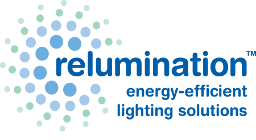Eyestrain is a common problem faced by many office people who work in front of a computer monitor for hours at a time. It causes tired eyes, headaches, blurred and sometimes double vision. Although some of the symptoms seem serious such as double vision, the effect is temporary and only requires rest to eliminate the problem. However, long hours in front of a computer are unavoidable for many workers and therefore, constantly taking long rests is not an option.
Fortunately, computer monitor eyestrain is greatly reduced by adjusting the surrounding workspace lighting. There should be no bright lighting in front of the monitor screen because this will cause glare-like reflections off the screen that cause eye fatigue and strain. In addition there shouldn’t be bright sources of light behind the monitor that shine directly into the worker’s eyes. These also produce glare.
Once these glare sources are taken out, there remains another source of glare: the monitor screen itself. The reason for this is that the screen is a bright source of light set against a darker backdrop. The problem is the contrast between the brightness of the screen and the background.
This is easily solved by using bias lighting against a wall behind the monitor. That is, you want to backlight this wall enough so that its brightness matches that of the monitor. A simple strip of LED lights placed on the backside of the monitor that illuminates the wall does the trick. These lights don’t shine directly into the worker’s eyes because they’re behind the monitor and are aimed in the opposite direction toward the wall.
LED brightness is easily adjustable so that the backlit wall brightness is readily made to exactly match the monitor screen’s brightness. Why does this work? Because the eye’s pupil adjusts to the average brightness of whatever is in front of it. When the background behind the monitor is dark, the pupil is enlarged and allows more light into the eyes. This makes the monitor a harsh source of light.
When the background is as bright as the monitor, the pupil contracts and allows less light into the eyes. This effect is similar to stepping outside in the sunlight and allowing the pupils to adjust. Everything has the same illumination level, so there is no glare source. Glare is essentially big contrasts in brightness.
